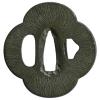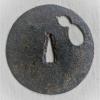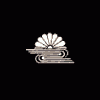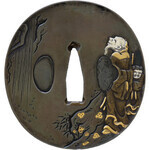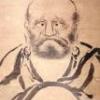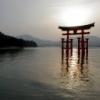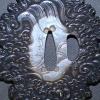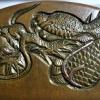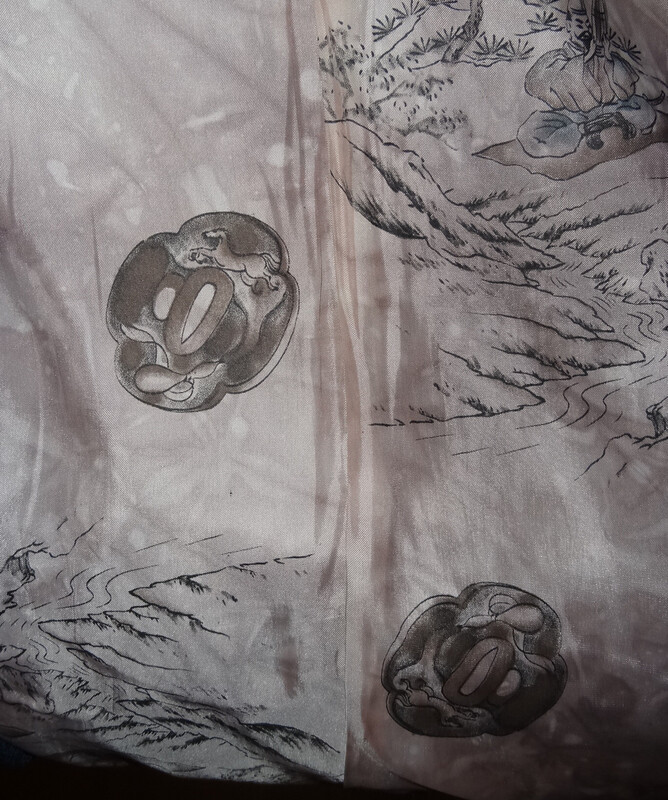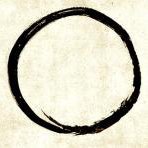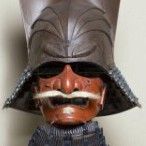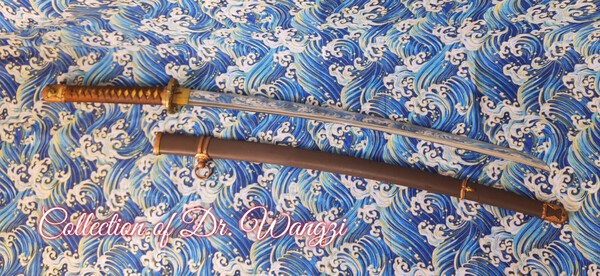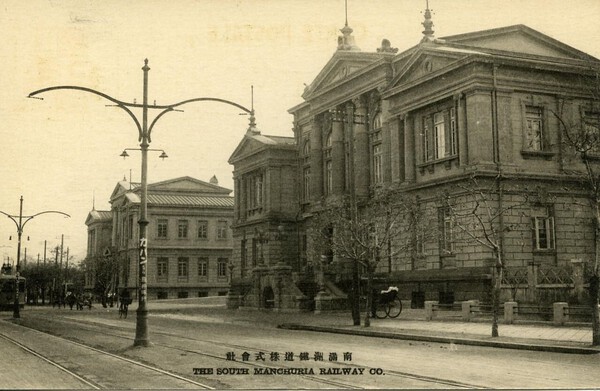Leaderboard
Popular Content
Showing content with the highest reputation on 02/02/2025 in all areas
-
The file marks is how the gold is attached, it is pressed in to hold it in place. The file marks are visible because over time it has squashed in further and has worn. This is honestly really rudimentary stuff, there is no confusion here.8 points
-
The Tsuba is not cast and a gold pen was not used to decorate it, it is just nunome zogan as Geraint pointed out.8 points
-
8 points
-
Oil your NAKAGO Darcy Brockbank Japanese books say to leave the NAKAGO (the tang of the sword) to age, because the condition of it indicates how old it is. I think this is good advice for the mid-1600s. But we are past the Edo period now. Swords are historical treasures. If we continue to let NAKAGO “age gracefully” then there is a future where they turn into dust. Not now, not next century, but not so far past that. The black oxidated state of NAKAGO are fairly stable, but not perfectly stable. Otherwise, there would be no “graceful aging” at all. Logically, we cannot have it both ways, that the nakago is safe from eroding away and that different period nakago will show different aging conditions. If these nakago were not slowly rotting away on a centuries timescale, then they would hit a stable point and never change. In examining the NBTHK Juyo Token it is very frequent that signatures have become partially or completely obscured on old blades just from rusting away. The older the blade, the more likely the signature has wasted away. We see this as well on Shinto blades that have not been cared for properly. The lack of care has accelerated the rotting away of the nakago in these cases. But even in cases of well maintained blades, when we get to the Nanbokucho and even the Muromachi period, it’s very frequent that parts of signatures are missing. The major disaster here is that we are losing irreplaceable information. As well as irreplaceable examples. We are left in some cases now to guess the maker as important parts of the signature that would settle the question of who made the blade are missing. At this point we should be simply looking to lock everything in at the status quo and halt all slow erosion of the nakago as well as fast setting rust of the upper part of the blade, by making sure the nakago gets oiled as well as the upper. After oiling the upper part of the blade, you should take a fingertip of oil and use this to wipe onto the nakago. You may not have to oil the nakago as frequently as the upper, but this should be part of standard care practices at this time. Just because a Japanese book says to do something doesn’t mean it’s correct. Similarly, uchiko is a disaster that is accelerating the number of polishes being requested and executed, and thereby reducing the lifespan of existing swords. These processes have not been questioned, it is just something that people do because it’s how it’s always been done. Museums now will not let people take photos of paintings using flash photography because the photons from a million flashes will over time degrade the pigments in the paint. This is the same attitude we need to take to swords. That means, oil the nakago and don’t use uchiko ever. You wouldn’t rub the Mona Lisa with sandpaper. So you don’t do this with swords either. KINPUNMEI AND SHUMEI There is a special case with lacquer inscriptions. These are put in place by appraisers. Putting a sword in and out of a tsuka causes the nakago surface to rub and eventually removes these appraisal signatures. This is a major problem, because old Honami appraisals are also valuable parts of the history of the blade. There are innumerable examples of Juyo blades now with partially or fully illegible appraisals on them. Simply from the storage methods we use. This is a travesty and should not happen. It is a reflection of inadequate care procedures. I have had examples that passed through my hands with just traces of shumei left on them and when I saw the blade again 10 years later they were now completely gone. I don’t have a simple solution for this problem. Other than a loose fitting tsuka or a channel carved in the tsuka to specifically clear the mei. If you are having a shirasaya made for a blade with kinpunmei or shumei on it, you should consider asking for this. A channel carved over the attribution will protect it from wear. It will loosen the tsuka somewhat but unless you’re intending on cutting anyone down with the sword, this is I think a tradeoff you can live with. As well, do not oil over one of these lacquer inscriptions. Lacquer should not react with oil, but you should play it safe and furthermore, rubbing the mei with your fingers all the time will do harm over the long run. Anyway it’s something that bears some discussion in the community, because currently there is almost no action in terms of preserving these things and it means that centuries from now, they will be gone. Posted on August 6, 20176 points
-
6 points
-
Here we go again... @Dan tsuba There is nothing that indicates this is a cast..6 points
-
Just a couple of corrections, if I may. The two names in question are Gyokurinshi Hideji (玉林子英二) and Gyokurinshi Teruyoshi (玉鱗子英義), both smiths who had been adopted by Terukazu (英一).5 points
-
That's just average Nunome zogan,with typical cross pattern on iron. There also are silver zogan on top and bottom, which has sulphurized and colonized the iron, it means that tsuba is probablu late edo. But I don't understand why it should be a cast tsuba?! On side picture you can see there are slight wear inside nakago ana, it has been mounted, but I think the owner has cleaned a bit to raise the gold color and also cleaned seppa dai. That is part of large collection, I missed another tsuba with a dragon from same seller, some are fake, but some are good stuff, that one with dragon was a very good one.5 points
-
I suggest people here to watch videos showing the processes, and if they can, experience it by themselves, it's very interesting to try it, as I did. It can be useful to evaluate some works, know more about technic and appreciate the level, but also to possibly imagine the possibility of repair, or utsushi if required. Here, the technic is wire gold nunome zogan, one quite coarse weave pattern, not the highest level indeed.4 points
-
4 points
-
4 points
-
The correct terminology is often the key to a better understanding. It has been mentioned before, but I will underline it here: There are no file-marks to be seen, it is (usually) a cross-hatched pattern made with a very sharp TAGANE. Gold or silver wire is punched (using a small TAGANE with a polished flat or very shallowly rounded tip) into this roughened surface where it sticks quite solidly. It is an ONLAY technique, not inlay. As mentioned above, the exceeding cross-hatched pattern is usually flattened with a MIGAKI-BO (burnishing steel rod). In this case, that step was omitted which results in a decorative but probably not high-end TSUBA. No evidence needed, everybody interested can read about it or watch the related videos.3 points
-
3 points
-
Nothing indicating cast here, and the nunome is done as it always was. Agree with those above that say nothing wrong here.3 points
-
Feels right. Nice little menuki. The attached gold Kirin menuki were mine. Note the similar spiral sunburst carved patterns. NBTHK said these were Yanagawa. NBTHK mostly got it right. Near miss.... Darcy and I later established they were identical to a Kikuoka school pair that was in a Juyo set mitsukoromono.3 points
-
This is perfectly legitimate. It’s just a later generation Norimitsu, not the “famous” one, and it’s a short blade, hence the lower price. There were many smiths who used this name. Always nice to see a signed and dated piece, though.2 points
-
It’s a bat on a pomegranate.Its Japanese. It has damage (section missing on the stalk…maybe there was another leaf) Age…..probably Meiji. Not a common subject matter.2 points
-
The Complete Guide to Brass Oxidation: Causes, Prevention, and Cleaning - MFG Shop Imagine the tsuba hanging in some room with varying temps etc, sulphur from coal fires etc. No surprise to me you will see tsuba with differing patina, especially if sat on a wall or whatever2 points
-
Jean, this is definitely not anything to do with shibuichi or shakudo. It is definitely sentoku ie a brass type alloy and that definitely does develop an oxidised patina depending on what it is exposed to. I’ve handled a fair bit of Japanese mixed metalwork and its restoration. The re-patination of overcleaned pieces basically restores a fine layer of oxides on all/any alloys - the final colour of which will vary depending on the actual balance of constituent metals used and the chemicals used in the process. That is what gives the often stunning multicoloured effect found on these pieces. Gold however does not oxidise (I think!) On this tsuba, if you look closely on the front side you can see a very fine line that goes from the nakago ana vertically to the rim. That strongly suggests it has been hung up to display using a fine wire or thread. Thus the face will have been totally exposed to whatever whilst the reverse will have been protected. I first bought this tsuba together with a few other really good Kinko pieces all of which had the same vertical line. I suspect that some of the colouration could also be nicotine…..maybe on the wall in a “gentleman’s study” type environment.2 points
-
2 points
-
@Franco D I will apologize in advance for my poor photography skills. Getting good boshi shots is hard due to the ko-kissaki, the tightness of the boshi to the edge, and my general lack of good photography skills. Hopefully these can show enough to try and get a glimpse of the boshi you can see when actually holding the sword. To my eyes, it does appear to run close to the edge but not off the edge and makes a small turnback towards the tip. Since the sword has undoubtedly been polished numerous times over its 800 year life, we can speculate how much the boshi and kissaki shape has changed over the years. I'd be inclined to call it ko maru agari but on 2nd and 3rd photos, you almost see a bit of midare in there. There are very small midare elements like in the hamon which I do not believe I captured well enough in my photos.2 points
-
Another thread on here has been talking about brass type alloys and their appearance/patina. That discussion reminded me of this tsuba that has returned to me having had a short holiday elsewhere🙂 One side has been exposed to the light/atmosphere, the other side shrouded. It looks like it was hung via a very thin thread rather than boxed. The difference is quite spectacular, you would not believe they are sides of the same tsuba made from the same alloy. Anyone beat that for a stark contrast?1 point
-
Another example is Toshi. 寿 - Shinjitai (new form) 壽 - Kyūjitai (old form) https://en.m.wikipedia.org/wiki/Kyūjitai1 point
-
Nathaniel, what you are seeing is the modern form of the same kanji. Some kanji have evolved over time and the modern version are used for attributions even when referring to an inscription that used the older form.1 point
-
Dear Patrice, sorry, I cannot tell you which technique was used in the plating of the flowers on this f/k set. At least not without close examination to figure it out or at least venture a guess. One thing that I'm puzzled about is that these do not appear to be Botan, that is peony flowers. Ah, Kiku, yes, that's much better!1 point
-
Hi Carlo, I can't see anything about the paper or sword that would make me think that it is anything other than as stated. There are several smiths signing this way, but probably 3, perhaps 4 who were active during the period to which the sword is dated: https://nihontoclub....a=All&school_nid=All If you go to the www.aoijapan.net website (where they list the swords they've sold previously) you will get a number of hits if you use the search facility but you'll have to sift through them: https://www.aoijapan...=norimitsu&x=22&y=13 Alternatively or in addition, a general internet search on "Osafune Norimitsu Bunmei" returns a number of hits for swords made around the same time as this one.1 point
-
This was quick - terrific job! I like those old origami writings, although difficult to read. Modern papers are good to read, but in some way aseptic. Thanks a lot!1 point
-
@OceanoNox - An interesting video. I take your point, I had always assumed that the "woven cloth" description referred to the effect achieved at the end of the process rather than the method used to achieve it and that, given there are a variety of methods for achieving an inlaid effect, some other method than nunome zogan was used where it didn't have the weave effect. Certainly in the video you posted, the gold is left proud of the surface and there is none of the woven effect showing through it, also it shows how the gold is spread into and over the grooves and which would also account for the varying thickness of gold effect in the tsuba posted first up and which made me think it was not inlaid wire. @JohnC - (and to others) - apologies, my error.1 point
-
1 point
-
Colin i think i misunderstood you, sorry. I thought these doubled color tsuba was the work of the artist. No i understand it was obvious the reason of a long time presenting.1 point
-
Alex, just expose it to the fumes of liver of sulfur (H2S), it works immediately.1 point
-
Thanks Alex. Boy we are making hard work of something blindingly obvious🙂1 point
-
Sorry Chris, in this instance you are wrong. I have the benefit of handling the piece and also the others that came with it. All had similar heavy discolouration to one side.1 point
-
1 point
-
1 point
-
The motif is called „Katata no Rakugan“ 堅田落雁, descending geese at Katata, one of the famous Eight Views of Omi at Lake Biwa. This is connected with clouds or fog, thus a view to the sky, so komorebi seems unlikely. There are a variations of this theme in other parts of Japan, for example a series by Hiroshige who locates the Eight Views around Yokohama: https://yokokanaguide.org/?page_id=150641 point
-
Thanks @nulldevice! Ford Hallam has some really incredible youtube videos. I also don't know much about tosogu, but watching his youtube channel is always informative. I should watch it more. He has a way of speaking while he works that's soothing and I always learn a lot. I recommend everyone check out his channel who's interested in fittings. May he rest in peace... Cheers, -Sam1 point
-
I came upon this tsuba with composition that is described as rokugan (descending geese or geese alighting). Apparently there is a traditional Japanese hard candy with this name because it resembles descending geese. I think that it has some of the elements of komorebi. https://world.seiyud...m/product/tu-010415/1 point
-
There is no photographic evidence, only a photograph. We just have different perspectives because of our different levels of experience and knowledge.1 point
-
1 point
-
Robert the one thing that might create mix up is that the text passages in the answer post are not for this particular work but what is considered as common work of the smith (and his lineage) in general. I do personally think the curvature of the quiz blade would be "normal / average", I see it as very common curvature, not easy to guess period judging that. I do fully agree with Oliver that Markus Seskos Kantei books are extremely good resource, I use them very often. I believe the items in Kantei books are items that have been presented for kantei at NBTHK HQ as I have them also in the magazines. The great thing when reading about kantei items in NBTHK Tōken Bijutsu magazines is the fact that an expert includes an explanation of some common incorrect guesses. As I participate in NBTHK monthly magazine kantei it has been extremely helpful to read the explanation on the times I have been wrong and sometimes I can understand why I chose wrong smith after reading it. Unfortunately I don't have the knowledge of writing such piece and include guesses and compare them to the quiz smith.1 point
-
It's just part of life, only dirty mind make a big deal of it.1 point
-
Dear All. Just to be clear this is not a sanmai tsuba, or even by my definition a tsuba. It's a modern production and finding fancy ideas about the possible construction is futile. This is just a badly made reproduction. The marks are the result of poor alignment in the making. the surface finish has nothing to do with traditional Japanese techniques and isn't worth discussing unless you have an interest in low level engineering practice. A couple of people have already pointed this out but we seem to be stuck on this. John, if you are thinking of buying it then don't. If you want a few more then have a look here, at the time of writing two of the same design in this Ebay shop. https://www.ebay.co....429486.m3561.l170197 All the best.1 point
-
Decades ago I went to look at a sword and it was 'bleh', but sort of real looking. I declined to buy it and the owner said he would 'show it to the Japanese gentleman who visits from time to time' (Mr Nakayama for those who remember him). I left my details and asked if he would let me know the outcome with the 'Japanese gentleman'. Much to my amazement quite some time later the owner did ring me to say that the 'Japanese gentleman' did buy the sword at a price I wouldn't have paid, saying it was a Kabuki sword. It was the only sword like it I have ever seen. BaZZa.1 point
-
I'm not sure because the resolution makes it a bit grainy, but I think one side is the forging of the sword in August of 1851 by Eiji, son of Gomura, and the other side is the quenching of the sword in February 1852 by Hideyoshi, son of GoXX (doesn't look like Gomura). Anyway, a gassaku. The August and Feb dates are probably just the normal, "traditional" good luck inscription dates.1 point
-
Hi Steve. Glad you can see the more organic asymmetry of this particular komorebi motif. Looks like it was done in a pretty narrow window of time too… late Momoyama to early Edo. Almost as soon as the Edo period kicked in, with all its regulations that enforced conformity, out of fear of having the unification fall apart due to subversive “thinking outside the box”, and individual expressionism… this type of Momoyama “looseness” was quickly suppressed.1 point
-
About the place of production, I think they have always been produced in Nanman until the end of war, or to be more exact, produced in the city of Dalian(大連). I have found a document, it is a section from the memoirs of ex-SMR staff. I made an interpretation below. It says, in July 1944, 三笠宮殿下(a royal member, the little brother of Japanese emperor)visited the Mantetsu gunto manufactory, 松岡洋右(the boss of SMR)planned to present a Koa isshin gunto as a gift. Therefore, the factory began to produce Koa Isshin gunto from 18th July 1944, they finally made 6 swords, and one of them was piked out as a gift. So at least they were still making Mantetsu gunto in Dalian in July 1944. the stamp 'Nan' (南,means south),the stamp 'Ren'(連,possibly stands for the city name Dalian or DaiRen,大連,where they were forged). The photo below is the Mantetsu gunto manufactory(滿鐵大連鍛刀所)in shahekou district of Dalian. I hope these would help. Zi1 point
-
Hi, Bruce, Yes, The SMR buildings in Dalian are now being used as museum ,exhibition gallery and liberary. However, it is a pity that exhibitions are mainly about history of SMR, not quite relate to its edged weapon manufacture. I am glad to post the details of my sword. It was forged in Autumn 1942(昭和壬午年秋), the number is Ku 101 (ク101). Zi1 point
-
1 point
This leaderboard is set to Johannesburg/GMT+02:00

